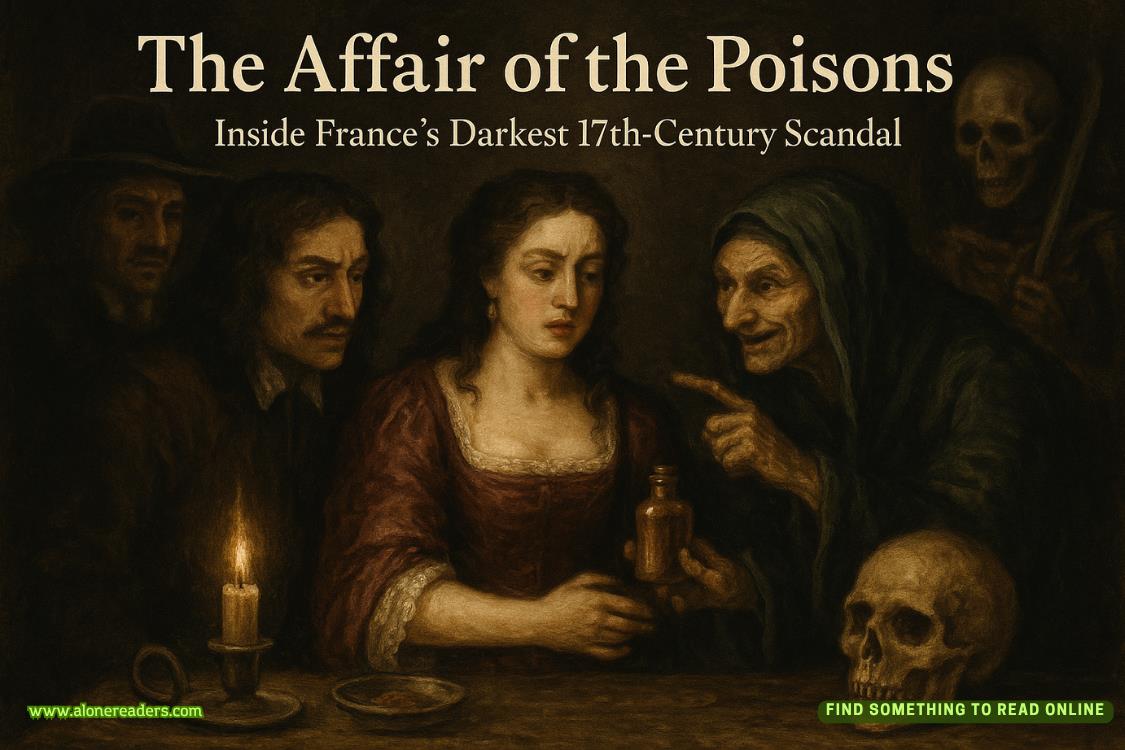Page 93 of The Librarians
Conrad reverses another round of quesadilla onto a plate and aims a half-incredulous, half-resigned look at Hazel. “What was Meimei, your hamster?”
“My mom’s cockatoo.” Hazel gives her mocha another stir. “She’s still alive, actually, forty going on fourteen. Very moody and has an opinion on everything.”
Conrad is silent a long moment. And then he says, “I have a copy ofTrails to Table. According to the box, it’s designed by a company named Monte Unlimited.”
Hazel slowly sets down her cup. “How long have you had it?”
“For a few months. It’s still in its shrink-wrap.”
No one speaks after that. Jonathan has no idea what this last exchange concerns, but the unfinished business between these two thrums and percusses, drowning out everything else.
Ryan returns with his laptop. He props it open on the kitchen island, grabs a wedge from the latest batch of quesadillas, and says, “Okay, I already looked up Perry’s cause of death before I met with Jonathan. Jonathan, do you remember what we said at the time?”
Jonathan is relieved by the resumption of normal conversation, despite the morbid subject. “You said it wasn’t natural causes but also that there was no reason to suspect that it might have been homicide.”
“Because he died of a fentanyl overdose, which I still see far too often.”
Conrad rinses out the bowl in which he’s beaten eggs. “And his family said no, absolutely not.”
“That’s what I understand,” concurs Ryan.
Conrad wipes his hands with a dish towel. “It might sound contradictory, given that Perry has done his share of stupid things, but he was scared of hard drugs—never wanted to try any. In fact, after his house curfew for driving under the influence, he gave up alcohol too. Last few times I saw him, he drank only soda water. He was not someone who decided to acquire a cocaine habit one day and then proceeded to buy the bad shit.”
“That was the reason his case was eventually assigned to homicide,” says Ryan. “That and the fact that he didn’t have any other substances in him, not even alcohol or marijuana.”
Jonathan rubs his arm—it’s spooky, a man who didn’t use drugs dying of an overdose. “How, then, did the fentanyl get into his system?”
Ryan shrugs. “His nose was completely clean and there were no puncture marks on his body made by needles.”
“What about Jeannette Obermann?” asks Hazel. “How did she die?”
“Carfentanil.”
Hazel and Conrad both suck in a breath.
“Is that the synthetic one that’s a million times more potent than regular fentanyl?” asks Jonathan.
“Fentanyl is synthetic too,” Ryan points out. “It’s fifty times stronger than morphine. Carfentanil may not be a million times more potent, but it’s unbelievably powerful stuff. You only need thirteen milligrams to sedate a literal one-ton elephant. One milligram of the stuff will kill an adult human—that’s a milligram, one thousandth of a gram. And Jeannette Obermann did have a tiny but rather deep puncture on her gluteus maximus.”
Silence.
Jonathan has never been less inclined to die of unnatural causes than atthat moment. He is sure the last thing Jeannette Obermann wanted was to have her ice-cold skin examined inch by inch on an autopsy table.
“Ryan, you listed how fentanyldidn’tget into Perry. Any ideas on how it did get in?” asks Conrad.
“He could have ingested it or come into contact by touch. But there was no sign that he was forced to swallow anything, nor was trace fentanyl found on his hands.”
“My grandmother enjoys a bit of alarmist news from time to time,” says Hazel. “She told me once about children dying from picking up their caretakers’ fentanyl patches.”
“Fentanyl patches?” Jonathan’s understanding of the substance is largely limited to news of overdoses. “You mean, like nicotine patches?”
“It’s used in long-term pain management for patients who are opioid-tolerant,” answers Ryan. “But we didn’t find patches on Perry—nor were there any telltale adhesive rims left on his skin. But as a theory it’s not half bad. The children who pick up grandpa’s fentanyl patches and earn themselves a trip to the ER can do that because those patches are left on for three days and sometimes fall off without the wearer’s knowledge. A patch on Perry could have similarly quit well before he was found.”
Hazel taps at the side of her coffee cup—she makes no sound but her motion is agitated and arhythmic. “So either he ate it or it entered his system via skin contact. You sounded pretty sure, though, about how the carfentanil got into Jeannette Obermann.”
“She did have marijuana in her system and a touch of psychedelics—not as clean as Perry. But likewise no hard drugs of any kind. And yes, the jab did it.”
“Where does one even get carfentanil?” wonders Jonathan.















